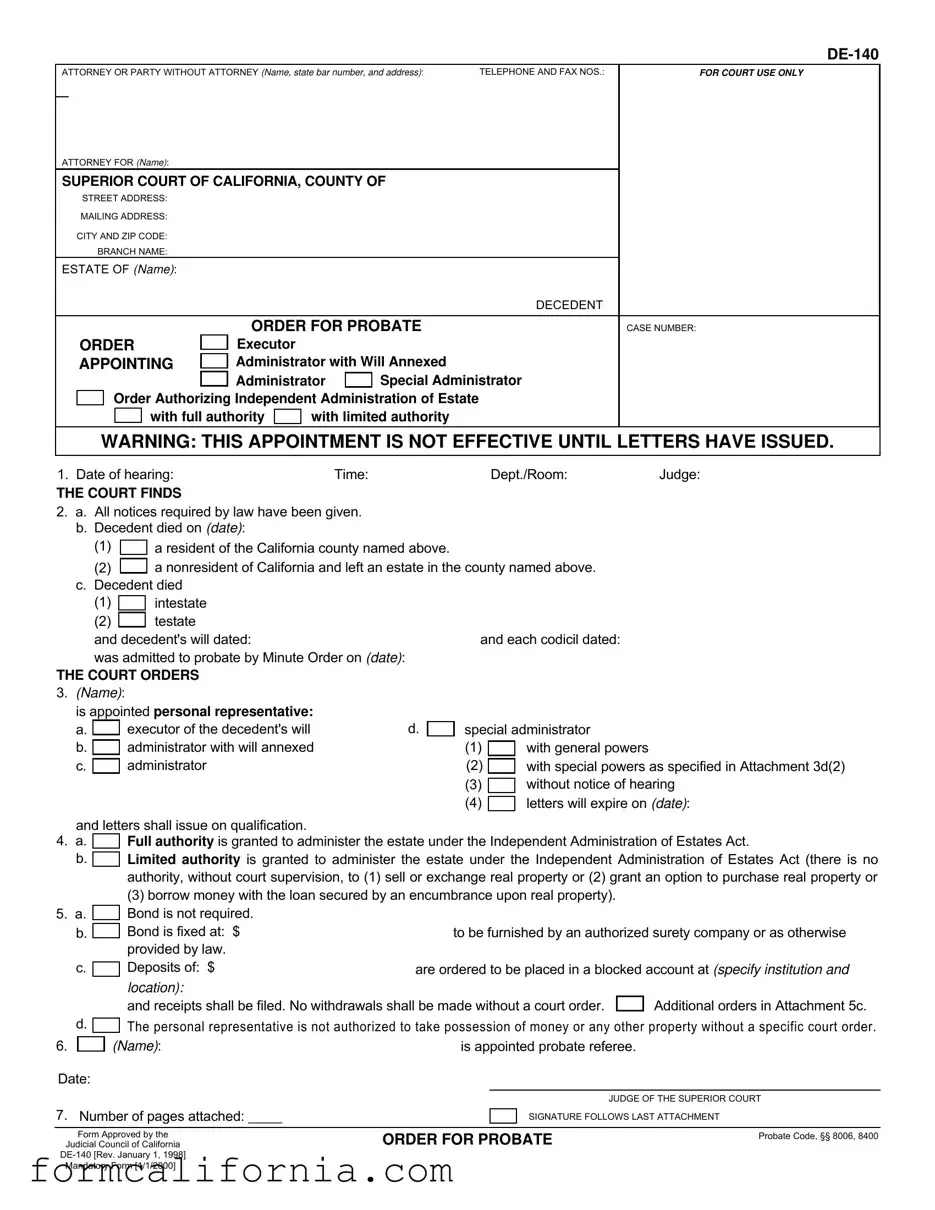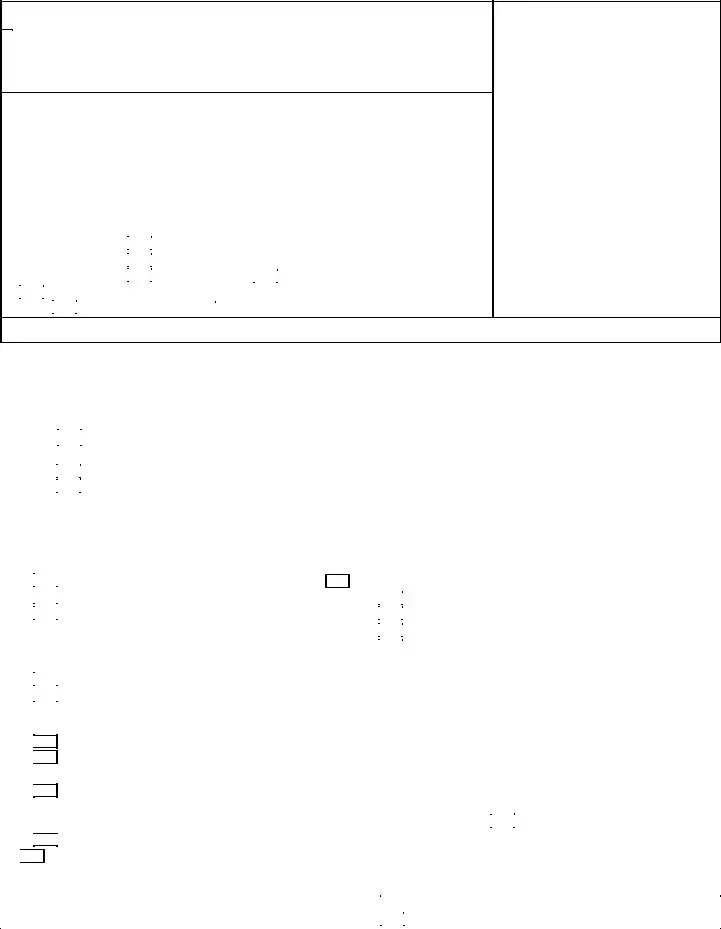The DE-164 Petition for Probate form shares similarities with the DE-140 in that it initiates the formal process in the probate court by requesting to probate a decedent's estate. This form lays out the groundwork for the probate process by providing the deceased's information, details on the executor or administrator, and the type of authority they're asking for, just like the DE-140 specifies the appointment and authority of the personal representative.
Similar to the DE-140, the Judicial Council Form DE-111 (Petition for Probate) is also utilized in the probate process to begin the formal proceedings. It helps in officially presenting the will (if any) to the court and requesting the appointment of a particular person as the executor or administrator. Both forms are crucial steps in legally establishing the management and distribution of the deceased's estate, detailing the type of administration the petitioner is seeking.
The MC-030 Declaration form is often used alongside the DE-140 in probate cases to provide detailed statements or explanations that support the information or requests made in the DE-140. While the DE-140 is specific to the appointment and orders related to the estate's administration, the MC-030 can be utilized to elaborate on any aspect, providing necessary additional context or evidence required by the court during the probate proceedings.
The DE-120 (Notice of Hearing—Probate) form, like the DE-140, is part of the suite of documents used in the probate process. It serves the purpose of informing interested parties about the time and place of the probate hearing. While the DE-140 lays out the court's findings and orders regarding the estate's administration, the DE-120 ensures that all relevant individuals are aware of and can attend the hearing, potentially to contest or support the orders mentioned in the DE-140.
The Judicial Council Form DE-147 (Duties and Liabilities of the Personal Representative) complements the DE-140 by outlining the responsibilities and potential risks assumed by the person appointed as the estate's administrator or executor. While the DE-140 is focused on the appointment itself and the scope of the authority granted, the DE-147 provides a roadmap of what is expected next, emphasizing the gravity and breadth of the appointed individual's role.
The Request for Special Notice (DE-154) form in probate cases is related to the DE-140 in that it is used by parties who have an interest in the estate to ensure they are kept informed about filings and orders in the probate case, such as the appointment of an executor or administrator detailed in the DE-140. This form ensures transparency and communication among all parties involved in the probate process.
The Inventory and Appraisal (DE-160) form is a necessary step that follows the appointment actions outlined in DE-140. After someone is appointed as a personal representative of the estate, they must inventory the estate's assets and complete this form. It directly relates to the administration authority granted in DE-140, dictating how the executor or administrator will handle and report the estate's assets.
The Ex Parte Petition for Authority to Sell Securities (DE-250) is another document with a procedural connection to the DE-140. After the appointment of an administrator or executor, as authorized in DE-140, the representative may need to obtain further court permissions to manage the estate's assets effectively, including selling securities. This form, like DE-140, requires judicial approval for specific actions concerning the estate’s assets.
Creditor's Claim (DE-172) form is indirectly connected to the DE-140 as it is a means for creditors to file claims against the decedent's estate, overseen by the appointed executor or administrator. The processing and approval of such claims are part of the estate's administration process, initiated by the appointment detailed in DE-140. It underscores the financial responsibilities and powers of the personal representative in managing the estate's obligations.
Lastly, the Petition for Final Distribution (DE-260) shares its end goal with DE-140, serving as a bookend to the probate process. Where DE-140 appoints an individual to start administering the estate, DE-260 is used to conclude the process by distributing the estate's assets to rightful heirs or beneficiaries. Both forms are pivotal, marking the commencement and conclusion of estate administration through the court.













 The personal representative is not authorized to take possession of money or any other property without a specific court order.
The personal representative is not authorized to take possession of money or any other property without a specific court order.